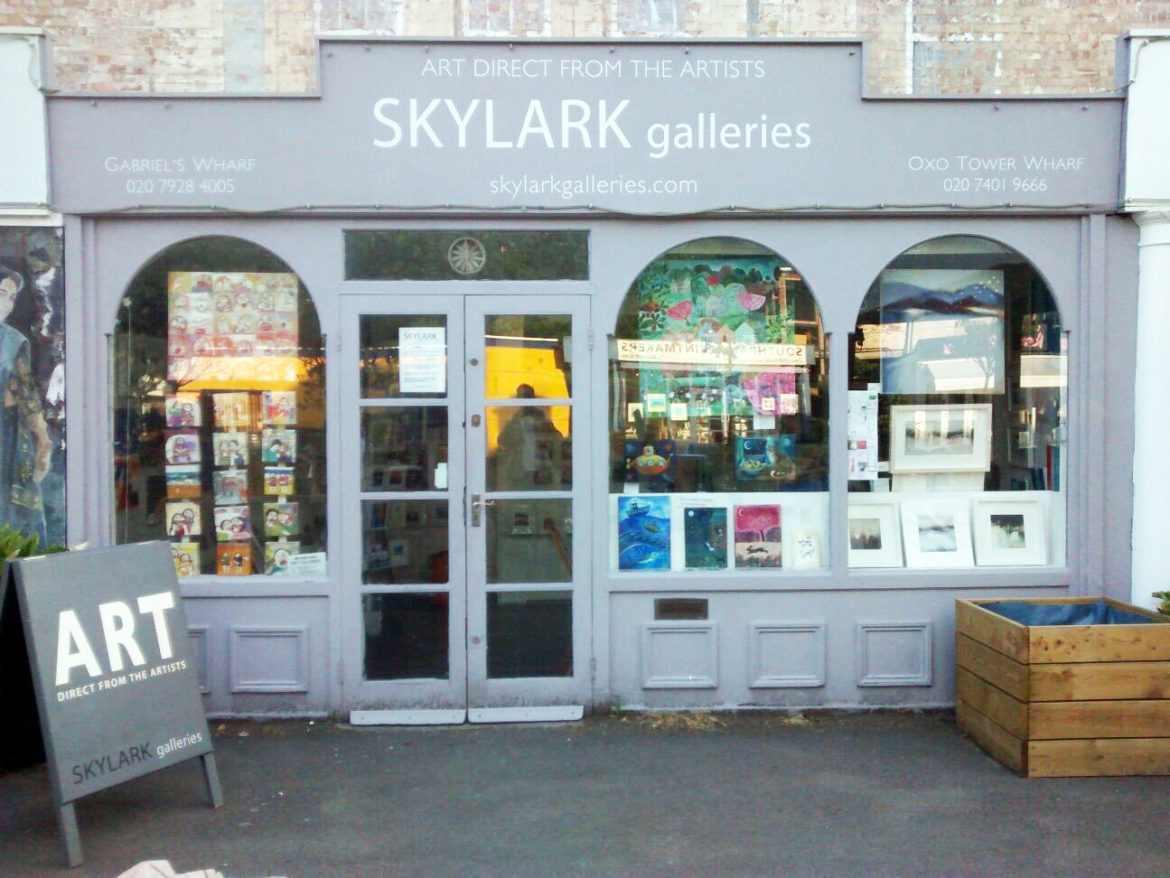SKYLARK GALLERIES
For the last eight years I have been a member of a collaborative group of artists who share the costs and workload of running two art galleries in London. The galleries have been going much longer than eight years with a long future ahead. Luckily for me I came across them at just the right time. I applied to join and was offered a space in ‘Skylark Galleries One’ on the South Bank of the River Thames.
But alas, now I am leaving the group. Old age is catching up!
MANAGEMENT
How do a bunch of artists manage a venture like this? This is quite a surprise because artists are usually solitary workers, and lousy at business things.
But thankfully this group had, and still has, a leader who is good at organising. She has been at the helm for a couple of decades. Her team changes over time as artist come and go. They have negotiated two premises from sympathetic ‘Social Enterprise’ landlords who see the benefit of having interesting tenants.
BENEFITS
A group like this provides another benefit for the landlords because it keeps regenerating itself as members leave and get replaced. The group also benefit because new members bring in a variety of experiences and skills that others learn and follow, so ex-members do not take away their input. Gradually we have developed a working and efficient list of tasks and responsibilities. When new artists apply to join we can discuss their potential contribution and explain how they will be important to the group. In practice the collective evolves survival and success. Plus every artist member gets first hand, direct, contact with collectors and other gallery visitors.
PRACTICALITIES
Wall space and floor space is divided into roughly equal individual sections. In practice there are more flat-work artists than three-dimensional artists making sculpture of ceramics. Artists have their own allocated space that changes monthly as the exhibition changes. Artists are responsible for choosing what they exhibit in their own space. Sometimes a theme is suggested. An example might be at Christmas or other public holiday.
ATTENDANCE
All member artists take turns to open the gallery and do a days work welcoming visitors and selling all the art on show. Usually just one artist is required each day. The rota is fairly allocated depending on the number of artists showing and space taken up. One gallery needs a member artist to be in charge once every three weeks and the other twice a month.
FINANCE
Every artist pays an equal share of the rent and other gallery running costs. The collective takes a small commission on individual sales that is added to the kitty to lessen the necessary monthly contributions. So the artist gets a large part of the selling price, and that is much better than the artists share in commercial art galleries.
POSITION
The geographic position of our two galleries has encouraged different art buyers for each gallery. One attracts and catches many tourists and one-time visitors to this area of London. The other is better positioned to attract regular office workers in the area. These fans can return many times and spread the word to other locals.
GOODBYE
So as I leave the collective I remember with pleasure the other artists that I met, and the world-wide audience of art lovers that came into the gallery.
WELCOME
If you are in London please pop into one or both of the Skylark Galleries on the Southbank of the River Thames. One is on the gallery level of the Oxo Tower and the other in Gabriel’s Wharf a couple of minutes further up stream towards the Festival Hall and the London Eye
OTHER INFO
Previous blog posts on this topic can be found here…
https://www.artpublish.com/the-value-of-collaboration-for-lonely-artists/
https://www.artpublish.com/artist-run-galleries/
https://www.artpublish.com/looking-forward-to-2017-and-skylarks-singing/
https://www.artpublish.com/the-zen-of-artists-run-art-galleries/





